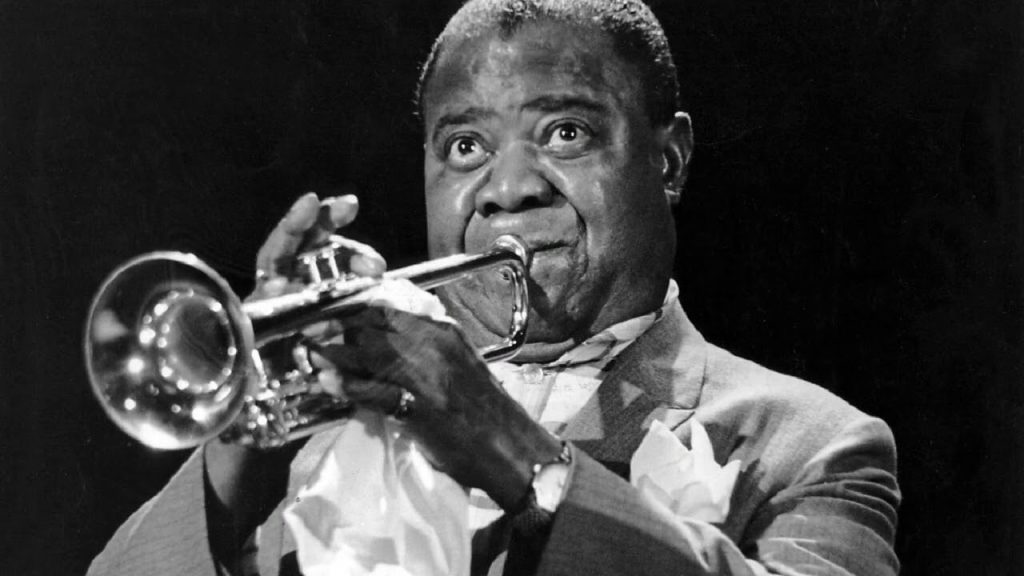
A Timeless Ode to the Beauty of Life
“What a Wonderful World” by the legendary Louis Armstrong is more than just a song; it’s a heartfelt reminder of the simple yet profound beauty that surrounds us every day. Released in 1967, this iconic track captured the hearts of many during a tumultuous time, offering solace and hope amidst global unrest. Its gentle melody and poignant lyrics have made it a timeless classic that continues to resonate with listeners across generations.
When Louis Armstrong first recorded “What a Wonderful World,” it did not initially achieve significant commercial success in the United States, barely making an impression on the charts. However, it soared to popularity in the United Kingdom, reaching the top of the charts in 1968. Over time, and with the inclusion in several films and TV shows, notably in the 1987 movie “Good Morning, Vietnam,” its reputation grew exponentially. Today, it stands as one of Armstrong’s most enduring and celebrated pieces.
The story behind “What a Wonderful World” is as touching as its melody. Written by Bob Thiele (under the pseudonym George Douglas) and George David Weiss, the song was crafted specifically for Armstrong. The creators wanted to capture his unparalleled ability to convey deep emotion and warmth through his music. Armstrong’s gravelly yet comforting voice imbues the lyrics with a sense of optimism and wonder that transcends time.
At its core, “What a Wonderful World” is a celebration of life’s simple pleasures and natural beauty. The lyrics paint vivid pictures of everyday miracles: trees of green, red roses too, skies of blue, clouds of white. These images remind us to pause and appreciate the world around us, even when faced with life’s challenges. The song’s refrain about friends shaking hands and people saying “I love you” speaks to universal human connections and kindness—a message as relevant today as it was over half a century ago.
Armstrong’s performance is nothing short of masterful. His deep, raspy voice carries a weight of experience and wisdom that lends authenticity to every word he sings. There’s an undeniable sincerity in his delivery that makes listeners feel as though he’s sharing personal reflections rather than performing a song. This ability to connect on such an intimate level is part of what has cemented Armstrong’s place as one of music history’s most beloved figures.
The emotional impact of “What a Wonderful World” lies not only in its lyrics but also in its orchestration. The lush arrangement features strings and horns that swell gently throughout the track, creating an atmosphere that feels both grand and intimate. This musical backdrop perfectly complements Armstrong’s vocals, enhancing the song’s message without overshadowing it.
For many older listeners, hearing “What a Wonderful World” is like taking a nostalgic journey back to simpler times—a reminder of moments when life felt less hurried and more connected to nature and community. Its themes encourage reflection on personal memories: childhood days spent under open skies, evenings shared with loved ones, or simply moments of quiet appreciation for life’s small wonders.
In today’s fast-paced world, where negativity often dominates headlines, “What a Wonderful World” serves as an important reminder to seek beauty amidst chaos. It encourages us to find joy in ordinary experiences and cherish our relationships with others. This perspective is particularly poignant for older generations who have witnessed significant changes over decades yet continue to find hope and gratitude through songs like this.
As we listen to Louis Armstrong croon about green trees and red roses with warmth only he could convey so effortlessly—we are reminded not just of what was but also what can still be; an invitation extended by this musical masterpiece inviting each listener into moments filled with awe at our wonderfully complex world—a true testament indeed from one era echoing eternal truth into another… because truly—it is indeed such a wonderful world!